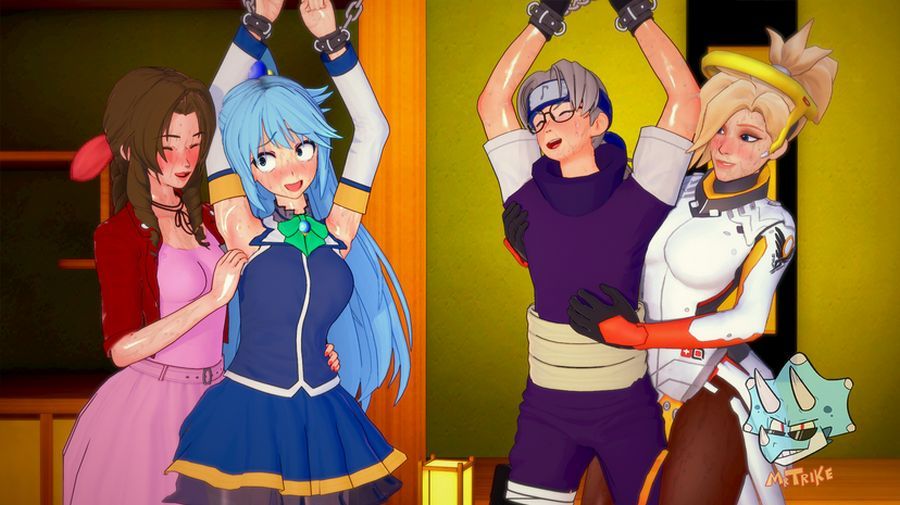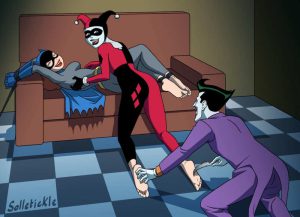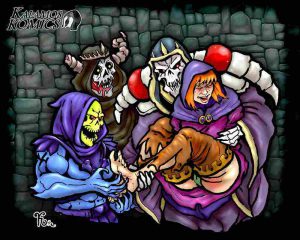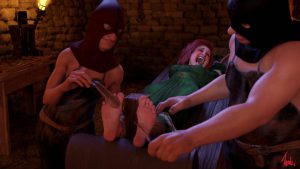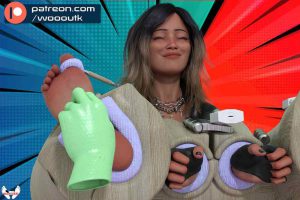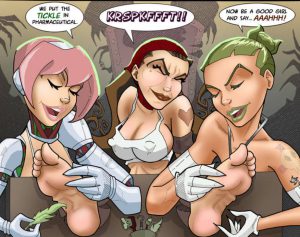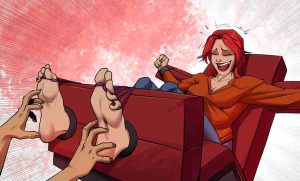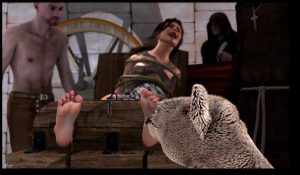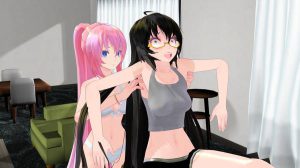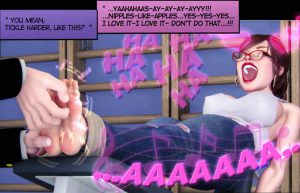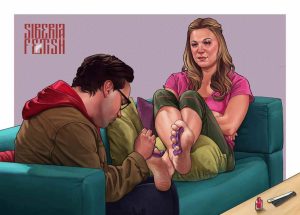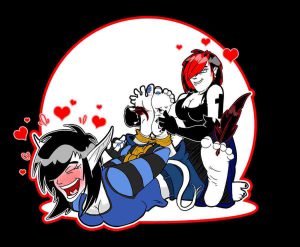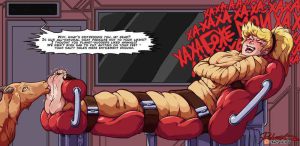Contents
- 1 1) Do you want to tell us something about yourself and your art?
- 2 2) What techniques do you use to draw? Do you have a favorite artist that inspires you?
- 3 3) How much was the passion for drawing born in you? And the one for the tickle?
- 4 4) What are the tickling scenarios that you prefer to draw?
- 5 5) What are the aspects of tickling that you intend to represent with your art? Example: the laughing, the wriggling, the relationship between tickler and ticklee?
- 6 6) Online there are countless photos and videos of tickling sessions. In your opinion, what do illustrations offer more than images of real life?
- 7 7) In your opinion, what makes tickling so interesting for fans of this phenomenon?
- 8 8) What are your works of which you are most proud?
- 9 9) Do you have any particular artistic goals for the future?
- 10 10) Do you think AIs will end up enriching or impoverishing the art of tickling representations?
1) Do you want to tell us something about yourself and your art?
My name is MrTrike. I’m a tickle torture enjoyer. I’ve started to like tickling since I was a teenager. Being born a 90s kid, I grew up with a heavy cartoon and anime culture.
Leggi tutto: Tickle Artists #115: Interview with MrTrikeI’ve always liked to read comics, watch making-of documentaries from cartoon productions, learn how to animate a frame, and how to create lighting effects. After a few years of watching videos and art, I tried to make some of my own. However, I’m not a good drawing artist… Honestly, I can’t even write properly XD.
I’ve always known that there were engines like Blender and SFM, but I never got into them until I heard of Koikatsu, the system I mainly use. So after a little chat with my wife, MsTrike, she agreed to let me try to get into tickle art. I’ve been exploring it for over a year now.
2) What techniques do you use to draw? Do you have a favorite artist that inspires you?
Since I use an engine, my “techniques” are most focused on camera angles and POVs. Sometimes, it is necessary to Photoshop the scenes, which I usually avoid due to my lack of skill. But the system itself provides most of the tools, like scenarios, light positions, and gadgets like handcuffs, ropes, and gags.
Most of the artists that inspire me are the ones that use engines too, like Baronstrap, Avijustfeet, Pastatickle, and Zombiepwner218. Although they make digital works, their systems are different from the one I use. The Koikatsu creators I follow the most are Ydalfgan, Sawasa13 (from Pixiv), and Mahogany78.
I also enjoy a lot of drawing artists like Yourhardnerdcollectr, SinisterSpaghetti, Wtfeather, and Kusujinn. I even did some works heavily inspired by them!
3) How much was the passion for drawing born in you? And the one for the tickle?
I always knew I wanted to work in the game-making market; however, I wasn’t able to due to multiple factors. I did study the basic concepts of game design and character creation but never got to fully create anything. I got Koikatsu in the hope of finding another source of income. However, it turned out that I got the feeling of working on something I always wanted. This led me to dedicate most of my time to it, and I still don’t consider myself a “GOOD” creator, as I keep learning more about the system every day.
As for tickling, I found out about the fetish in my late teens. And I honestly think it’s quite addicting. I did enjoy bondage and other forms, like shibari. However, I thought the idea of causing pain (which most of the content at the time involved) was not very comfortable to me. That totally changed when I learned about tickling, where you can mix the world of bondage and masochism with “soft” and (almost) harmless tingling on one’s body.
4) What are the tickling scenarios that you prefer to draw?
I like to make tickling scenarios focused on upper-body tickling, as it’s where I personally enjoy the most in real life. I mostly like to create situations involving 1v1 or 2v1 setups with none to light bondage and apply some sexual details like masturbation, penetration, and others. I think it makes the scene completely different and spices things up. I tend to avoid machines and many objects, especially if I’m animating the scene, as it creates too many elements to notice and correct.
5) What are the aspects of tickling that you intend to represent with your art? Example: the laughing, the wriggling, the relationship between tickler and ticklee?
I like to give the impression that both characters have been involved in the scene for a while. I do this by making the characters look very sweaty and wet, with skin reflecting light. I make the ticklee’s body language “speak”, showing that they’re using all their strength to get out of the situation. I also emphasize their irises turning tiny, as if the experience is driving them crazy. Mostly, I use everything to show that the ‘Sub’ is struggling, while the ‘Dom’ adores it.
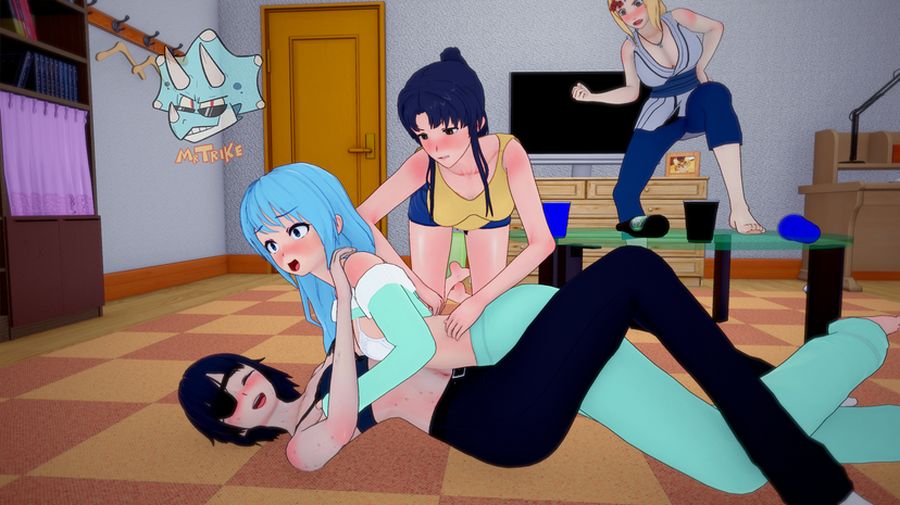
6) Online there are countless photos and videos of tickling sessions. In your opinion, what do illustrations offer more than images of real life?
Artworks in general offer more freedom than most real-life works. From a camera angle to a scenario and tools, the possibilities are much broader. For example, you’d never see a person being tickled by tentacles in real life, or a real and functional tickling machine. That’s not to say videos and photos are completely fake, but with artworks, everything can be exaggerated: expressions, camera zooms, and gadgets used.
And there’s the greatest bonus: EVERYONE has a character from a game/anime/cartoon that they’ve thought, “Oh, they’re pretty” or “Oh, they’re so hot.” That’s what drives most people to art. For example, if you want to see Tracer (Overwatch), Ichigo(Bleach), or Wonder Woman (Justice League Unlimited), art allows you to create any character in any ticklish situation you’d like. That, for me, is the “great catch.”
7) In your opinion, what makes tickling so interesting for fans of this phenomenon?
The fact that tickling is something so common in people’s lives—everyone has tickled or been tickled by someone at some point—makes it relatable, yet intriguing. While most people tend to avoid it, I think it’s quite embracing. Feet tickling, armpits tickling, belly button tickling—if someone has an attraction to a specific body part, the tickle fetish just enhances that interest. It’s like a “jack of all trades” for many different scenarios.
8) What are your works of which you are most proud?
I really enjoyed working on my “Control Over Nami” series. I started it on my first-ever account on DeviantArt (I believe it was for a 100-followers special). As I write this in December 2024, I recently posted the final chapter, and it’s amazing to look back and see how I’ve improved my skills, what was happening in my personal life, and what was going on in the world at the time. There were so many things!
After my first account being nuked, I had the idea of creating a “Magic vs Technology” tournament, where followers would decide the winner, and the loser would be tickled by the winner.
I also LOVED my “Girls Get It Done” works. It’s just a 2-picture “series,” but it focuses on male subs, which I intend to explore more in the future.
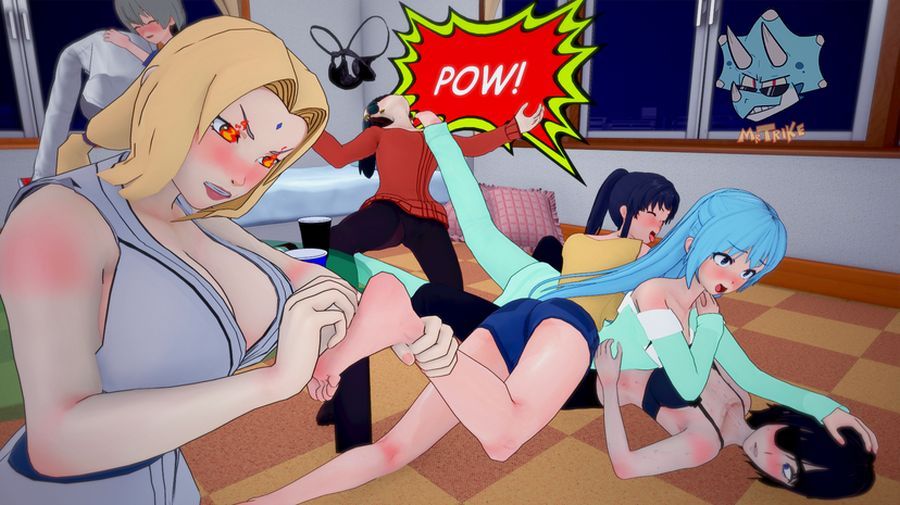
9) Do you have any particular artistic goals for the future?
Honestly, I’d like to continue making these works, but more as a hobby than as an actual career.
I’m currently learning and studying other systems to improve the style of my pictures and animations. I’d also like to improve my animation skills, as I never feel like I make things look “natural” enough.
10) Do you think AIs will end up enriching or impoverishing the art of tickling representations?
Well, AI is here, and whether we like it or not, it’s here to stay. I think AI is just a tool and has diverse uses depending on one’s needs.
I can’t draw properly myself, so I don’t think I’ll ever fully understand the usage of AI in hand-drawing. However, I imagine that, for an artist, shading is something that takes a lot of time. To me, it seems boring to do, but it’s a key factor in creating a compelling scene. AI could be used to reduce the effort required for the parts you don’t enjoy doing.
I’ve thought of trying to use AI to improve my work, but I’ve also been too lazy to figure out how to use it effectively. Plus, I think AI-generated work often feels “superficial.” Although it may win in numbers—by generating tons of pictures in a single batch—it often looks “lifeless” and repetitive to me.
I use an engine, and I don’t always consider myself an artist, but hand-drawn artists, to me, are still the true artists.
